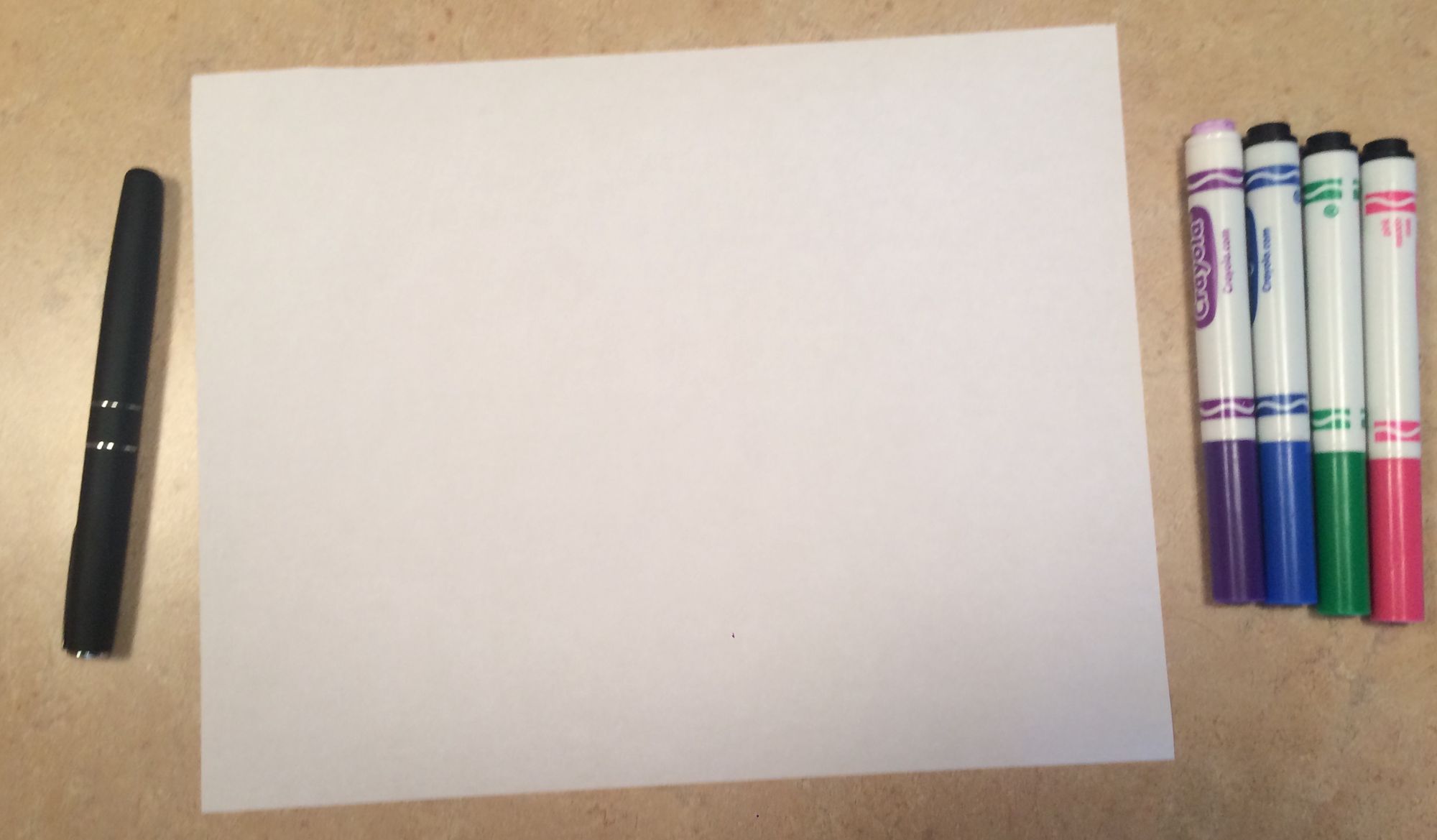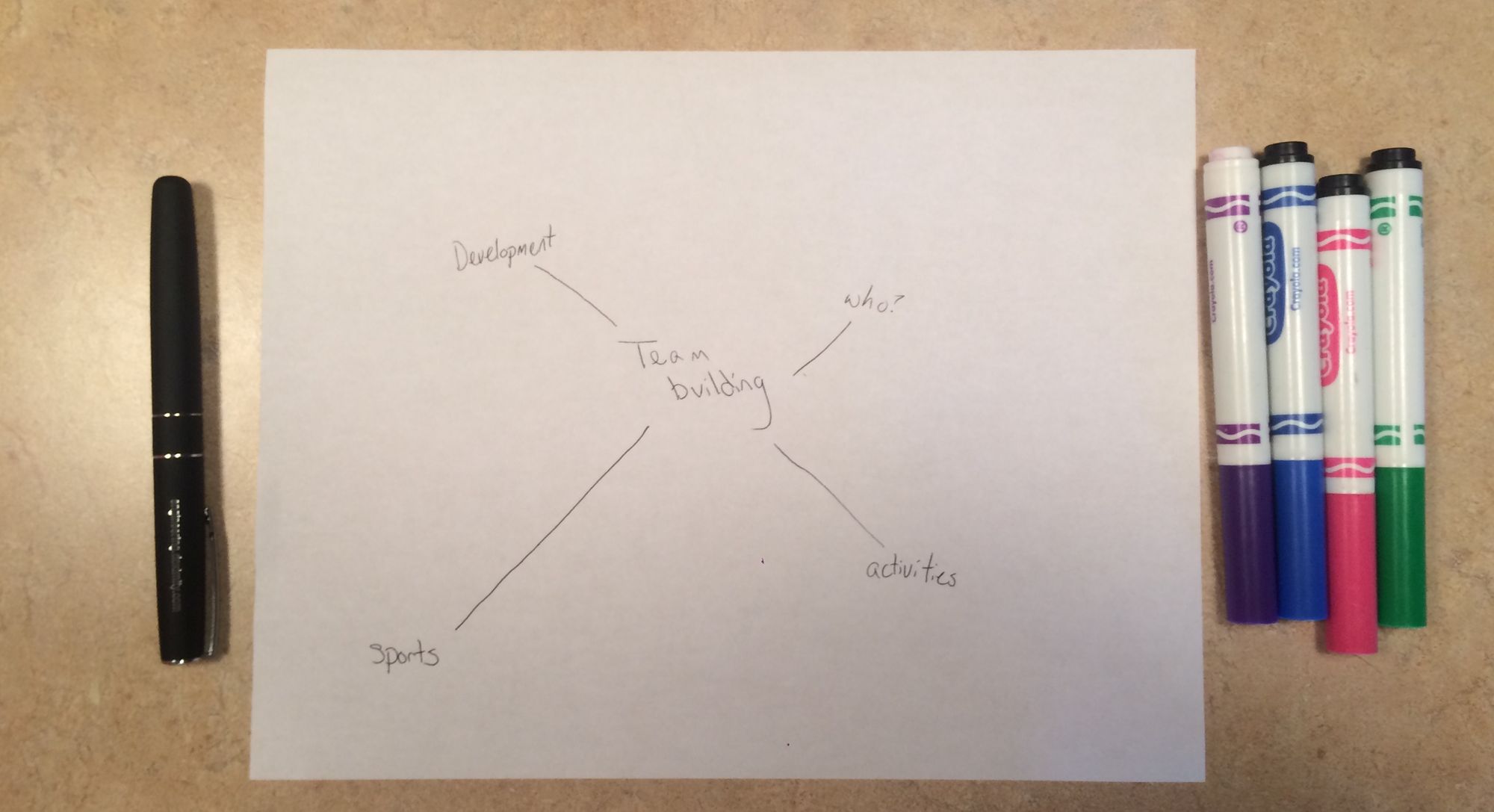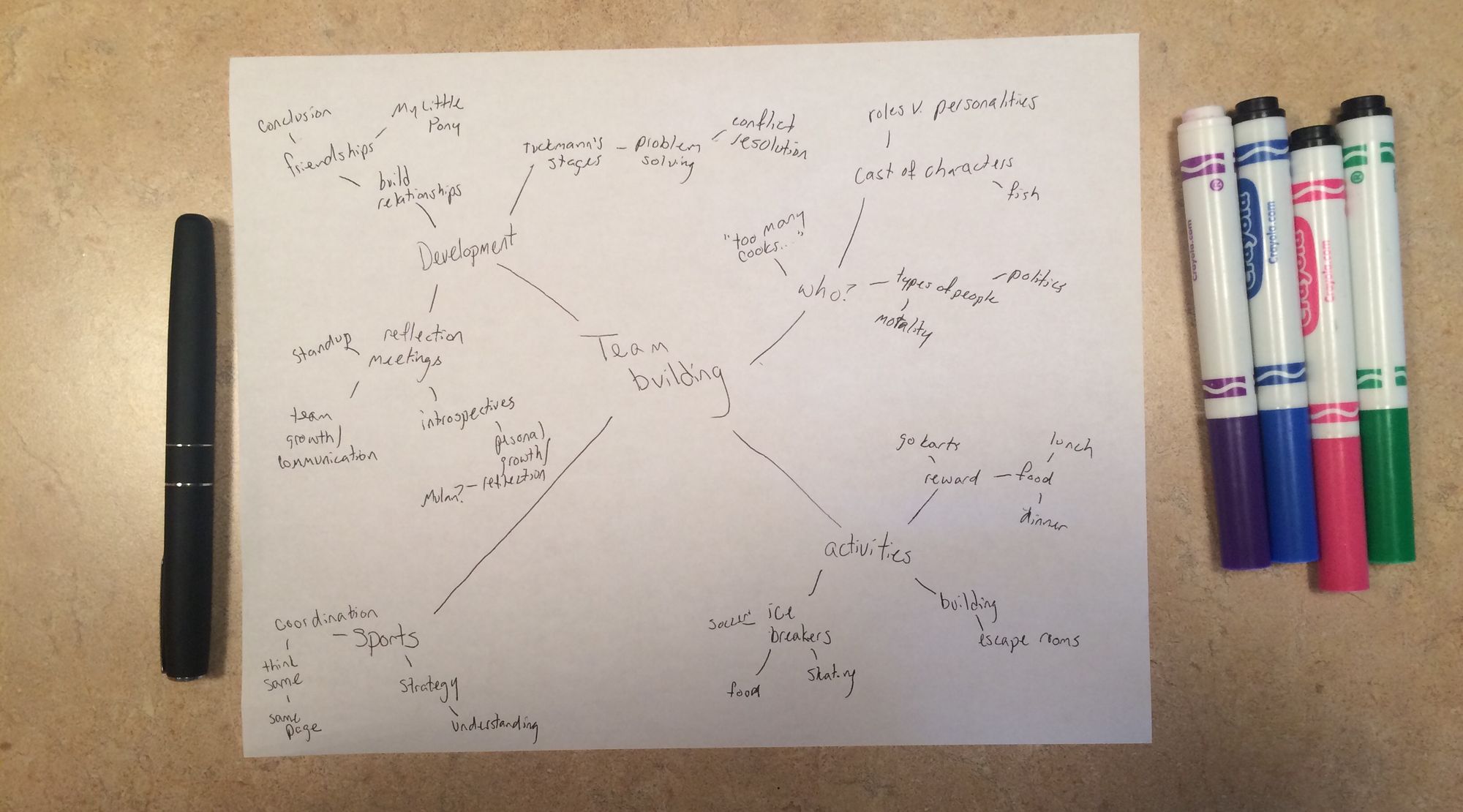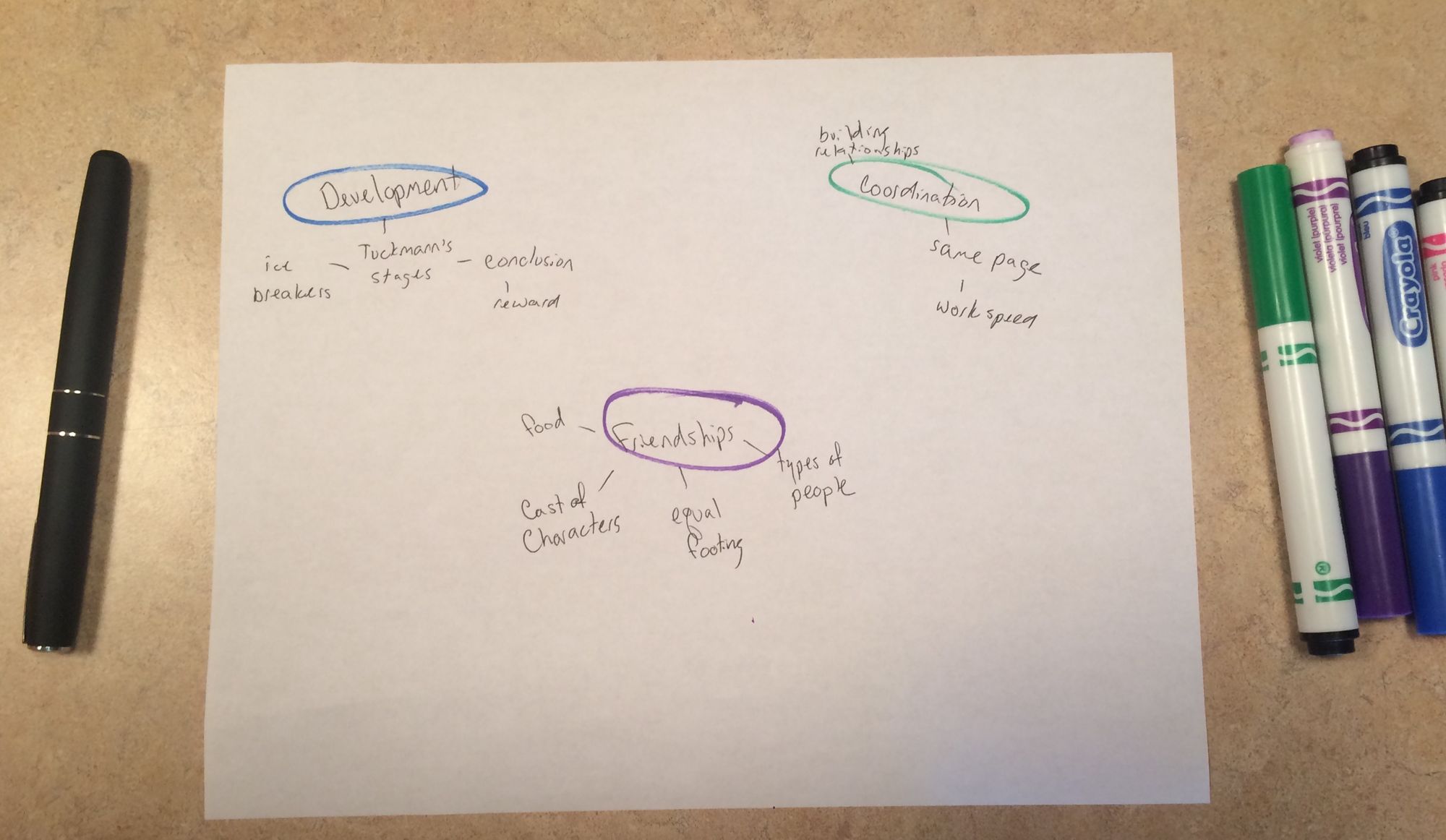You have a thousand different options for brainstorming. You could make a traditional outline, start doodling, call your aunt and see if she has any input, ask your cat, throw darts, make a model out of sticks… Or, you could make a mindmap. This is a way of organizing your thoughts before you begin working. According to Andy Hunt’s Pragmatic Thinking and Learning, “A modern mind map is a sort of two dimensional, organic, and holistic outline.” . You begin with one broad, central idea and work your way out to more niche, specific thoughts. Mind mapping inspires creativity and encourages you to look at your overarching thought from many different angles. While creating a mind map, you may stumble across ideas and connections that you wouldn’t have seen otherwise.
If you don’t have a lot of background information on your topic, start by taking some time to dig around on the internet. Do some reading and see what other people have thought of. Learn a broad range of information so that you have a lot of ground to work with when brainstorming.
Let's take a look at how to make a mindmap:
1. Get a piece of paper and your favorite pen.
Even if you dislike writing out your thoughts, it will be worth your time for mind mapping. After all, writing something by hand encourages creativity. Typing may be a faster way to get words on a page, but handwriting gives the brain extra time to think about the ideas that you’re recording. This leads to better processing of the concept you’re thinking about and allows your brain to reach out to other ideas that might be related.

2. Write down your core idea in the center of the page.
Take a good long look at that blank, white page. Think about your objectives, your perameters, and your requirements. Then, pick a single word or phrase to write right in the middle of the page. Be sure to choose broad idea so that you give yourself plenty of room to brainstorm within. Whatever you decide on, keep in mind that this will be your only limitation - whatever you write down will grow from this seed.

3. Watch water boil.
Take a moment to step back from your work. Maybe go for a walk or just sit and let your mind wander for a short while. Whatever you decide to do, leave your phone alone and let your mind be free from the everyday buzz of life. Boredom is proven to improve thought and creativity, so even if it feels like this little break is a waste of time, you’re doing yourself a favor in the long run. If you don’t give your brain anything to do, it will start to look inward for stimulation, giving you the ability to reach ideas that take more time to come up with.

4. Expand on your main topic
Scribble down every single idea that connects back to your main root. Even if an idea doesn’t seem like it will be useful later, you should still write it down. You never know what crazy connection will turn into a revolutionary idea.

5. Take each of those ideas and expand each of them with even more ideas.
Focus on each of those new ideas and write about each one of them, just as you did with that main idea the first time. You can repeat this step as many times as you want with new ideas and new input.

6. Once you have a beautiful mess of ideas, take your mind map and see what you have
Perhaps something in one corner of your map clicks perfectly with something in the opposite corner. Using shapes and colors will help you visualise and keep track of these connections.

7. Next, take a blank sheet of paper and remap all the ideas you want to use out onto it.
This will allow you to start to form a concrete idea and move in a more specific direction. Be open to adding new ideas as you transfer and organise the old ones.

8. Finally, you can take these ideas and use them to get started on forming your project!
Pull what you want to use from your mindmap. If you’re trying to create a product, maybe this is a list of features. If you’re writing a paper, maybe this is an entire outline! Either way, you can now pull from this organised, fleshed-out mass of ideas instead of pulling something from thin air.
Many people want to dive straight into working on their next project without taking the time to think it all through and come up with the best idea. However, even if you prefer to get going, give mind mapping a try! You might end up with the best idea you’ve ever had.
(Author's Note: Full disclosure, I’ve never really enjoyed mind mapping. However, in making my example mind map, I found that it really was helpful. I came up with an idea for another article that was somewhat unexpected. Maybe we’ll see that later!)
Like what you read? Subscribe to our mailing list below to stay up to date with Binary Noggin!

